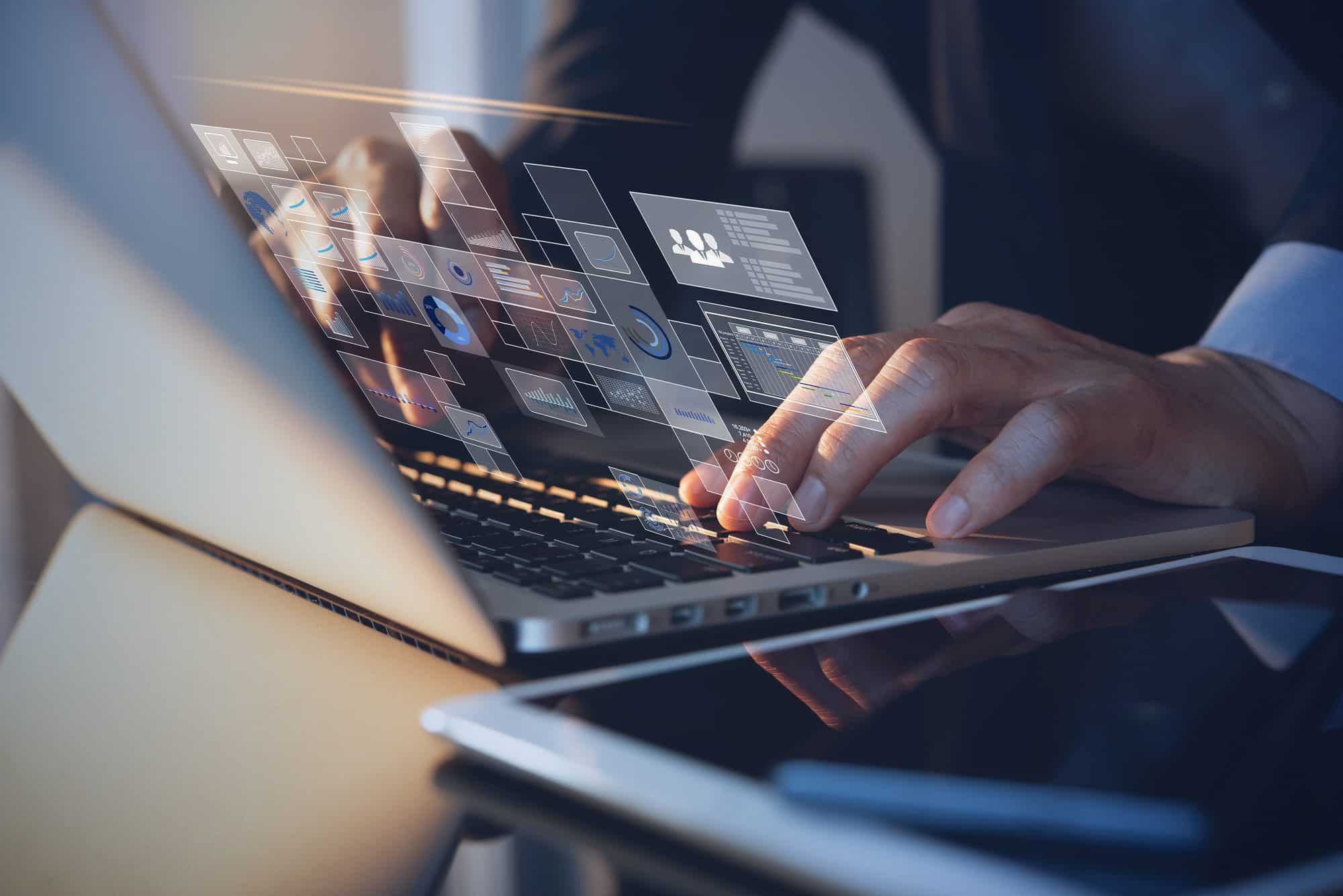
Phones, voice assistantsOur lives are constantly being taken over by technology, whether in the form of mobile phones, cars or connected watches. Everyday tools and gadgets help us, analyse us... but also influence us. More and more companies are using the data they collect to try and influence our behaviour. This new discipline is called the Internet of Behaviour (IoB).
ORSYS interviewed Cédric VASSEUR, a specialist in new technologies linked to robotics and artificial intelligence. He sheds light on this new concept and its consequences, both good and bad.
The IoB immediately brings to mind the IoT, the Internet of Things. Is there a link?
To put it simply, the IoB is an extension of the IoT (Internet of Things). The IoT is the technical foundation, both hardware and software, that collects data from sensors, processes it and shares it over a network. For its part, the IoB operates downstream. It is concerned with exploiting this data and transforming it into relevant information about the psychology of users. The IoB seeks to better understand and influence user behaviour.
Indeed, the IoB makes no secret of its intentions: thebehavioural analysis. The IoB incorporates into its very definition the notion of modifying behaviour. And this raises many questions, both technological and ethical.
What technologies are involved here, and how does it work?
Anything that can retrieve data on a user's behaviour can be used. The sensor-based IoT arsenal includes pedometers, voice assistants, cars, connected TVs, cameras... but also more traditional hardware, such as smartphones, tablets and computers. What's new here is that the devices work separately. They are also all used to pool the information gathered. We have so much data that it is becoming possible to create increasingly sophisticated AI models based on machine learning and deep learning. These models are used to identify levers for changing user behaviour by means of bias psychological.
When we talk about changing behaviour, we think of marketing and advertising. The commercial world is constantly trying to sell more, but also more effectively. Traditionally, a supermarket will place chewing gum and other potentially compulsive purchases near the checkouts. With IoB, we can proceed in the same way, with precision, speed and very precise targeting. Let's take a simple example: a website. By analysing your mouse clicks, your keystrokes and the speed at which pages scroll, we can generate a heatmapA graphic representation of the places where your clicks and your gaze will be directed.
This is followed by a number of real-time modifications. For example, placing the product they are trying to sell you right in front of you.


Giving customers what they want, even before they want it, is a real plus. This is the kind of magical thinking that marketing seeks to master in order to be as close as possible to consumers' real needs. This is the case here with the IoB: all that's left to do is to give a helping hand or nudge to direct customers to another product. Since 2014, Amazon has been looking into the possibility of early delivery (Amazon Pre-ship the principle of which has been patented) by preparing some of your orders today, even before you have placed and paid for them.
A new discipline has emerged: nudge marketing. Its aim is to encourage people to act in a certain way, without ever trying to force them to do so.
What other applications does the IoB have?
Consumer behaviour is not the only issue being addressed. We will also be looking to improve health, well-being, nutrition, sporting performance, better control of diabetes, tobacco consumption, stress management, and changing people's behaviour and ecological footprint.
During the COVID-19 pandemic, the analysis of surveillance camera images and those exchanged on social networks provided statistics on the wearing of masks, often with usable GPS data identifying, for example, places where more prevention posters encouraging people to wear masks could be put up. The pandemic has led to the creation of computerised health 'passport' systems. These can be used to identify places at risk, your vaccination status and people you have come into contact with over a given period of time. The French application TousAntiCovid is one example.
Still on the subject of health, thanks to a glucose sensor, we can estimate the right dose of insulin and suggest appropriate activities and meals.
Another use is in architecture. Modifying the layout of a building according to the flow of users is now very common. Uber, Waze, shopping centres and governments are using these technologies to optimise our journeys and parcel collection points.
The IoT is an extraordinary market: by 2025, there will be several billion connected objects and a market worth more than $1,100 billion, excluding hardware, according to a study by the GSMA, the trade association for mobile network operators.
Is there a link between psychology and the IoB?
As we have seen, the IoB uses a psychological and behavioural approach that can be found in various methods such as the Neuro-linguistic programming (NLP)or DISC, Process Communication Mode and the Myers Briggs Type Indicator (MBTI).
The striking difference is that the IoB benefits from calculation capacities that exceed those of a single human expert, with interpretation by a machine, using machine learning and deep learning algorithms.
Doesn't all this raise a number of legal and ethical questions?
Yes, it's a real Pandora's box. Shutting everything down would block innovation, but opening everything up would leave nothing left for human beings to do.. With regard to the use of data, these practices are governed by regulations, in Europe by the RGPD and in France by the CNIL. Conversely, China has neither a CNIL nor a RGPD. This leaves its population in the grip of mass surveillance and a social rating system worthy of the darkest science fiction films.
When my local grocer, who knows my habits, offers me products to suit my tastes, nobody's shocked. But letting a machine do the same thing is worrying. It's hard to imagine a machine responding to human needs, or even showing humanity in its exchanges.
As far as the ethical issues that are frequently raised are concerned, it has to be admitted that there has always been a balance to be struck between individual freedom and the common good. However, we must bear in mind that the road to hell is paved with good intentions, and that inaction and backtracking are not solutions either.
For example, monitoring the population with "TousAntiCovid" led to the creation of the ROBERT protocol with theINRIA in France and Fraunhofer in Germany. These teams have redoubled their efforts to come up with solutions that protect personal data. But there will always be loopholes. Even an absolutely reliable system runs the risk of "creating a general feeling of surveillance among citizens", as the following example shows warns the CNILThis is particularly true of video surveillance tools for ensuring that masks are worn correctly during a pandemic.
Hence the need for training! But who is this training for? What are the benefits?
Accessible to all, IoB training courses are aimed at decision-makers, project managers, researchers, engineers, sales people and psychologists who want to understand the technologies implemented by IoB. Whether to discover the new possibilities in this field or to get a head start. Because when it comes to innovation, you have to be among the first to discover new markets, their possibilities, their regulatory limits, their uses and misuses.
This course will also be of interest to anyone interested in psychology as a whole, and neuromarketing in particular. The idea is to discover how new technologies are influencing this complex field linked to the human sciences.
As an individual, how can you protect yourself from misuse of the IoB?
To avoid IoB, you ideally need to avoid the Internet and all types of sensors. You have to know how to remain anonymous and cover your tracks, bearing in mind that it is becoming increasingly difficult to avoid having your life digitally recorded. Remaining anonymous is becoming very complex, both on the Internet and in the street. As for preventing a machine from detecting a pattern in your behaviour, solutions do exist, but they are complex to implement. They are only within the reach of the major research laboratories. computer security or Research and Development departments of major groups to prevent industrial espionage and other leaks of information to the press.
These solutions involve tools that simulate Google searches for you. They can even simulate erratic mouse and keystroke movements to avoid a "frappology" type analysis, masks and make-up capable of thwarting the facial recognition algorithms of surveillance cameras or sound waves to disrupt intrusive voice assistants (Alexa, Siri, Google Assistant...). But not everyone can have a counter-espionage team at their disposal on a daily basis.
For 'benevolent' uses of IoB, how can we remain ethical? How can we protect ourselves?
We are increasingly seeing the arrival of responsible IoT/IoB solutions. To give a few examples: it is possible to train an artificial neural network with totally encrypted data. This involves encryption homomorphic.
We are also working on the 'explainability' of deep learning. When used with the IoB, deep learning is often perceived as an "impenetrable black box". We are also working on new models such as "federated" neural networks where the information is broken down into such small pieces that it becomes incomprehensible to the malevolent eye.
Finally, the IoB, like any IT ecosystem, also needs to protect itself against cyber attacks. This is an integral part of the DNA of any serious product on the market today, with players capable of measuring the impact of any leaks. Because yes, we won't be able to avoid them all, even with the best technologies and intentions in the world.
Finally, do you have any advice for readers new to this subject?
It's a subject that surprises and sometimes worries, and that's normal. It's also very new. Fears are often motivated by the unknown. By learning about and understanding the IoB, you can better understand the implications for yourself, your company and your customers, both individually and collectively. It also enables them to plan projects that respect standards and ethics. There are no bad technologies, only good or bad uses of them. The car was invented first, and the Highway Code only came later. It would be difficult to move forward if we were constantly questioning ourselves. That's why ethical issues are often debated alongside innovations, in order to gain the necessary perspective to understand what's at stake and its limits.


